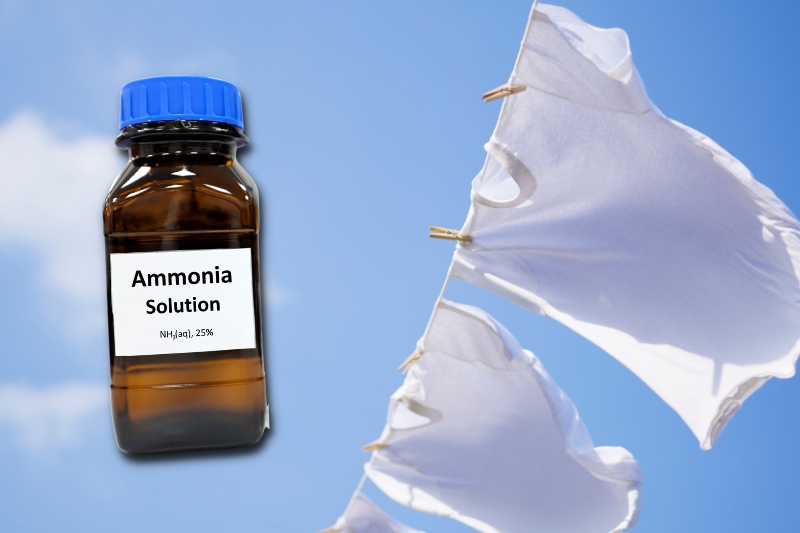Formed by combining hydrogen and nitrogen, ammonia is a powerful household cleaning agent that serves a range of purposes around the home.
One of the lesser-known uses of ammonia is as a laundry aid for stain removal, fabric freshening and more.
However, given its toxicity, it’s crucial that you know how to use ammonia in laundry correctly.
With that in mind, in this post, we’ll be giving you the low-down on five ways to use ammonia when washing your clothes.
Why Add Ammonia to Your Laundry Regime?
As a high-strength alkaline with a pH level of 11-12, ammonia is very effective at breaking down organic substances. This includes things like food proteins, grease, oils and fats, plus dirt, grass and blood stains.
In addition, ammonia can help to remove residue left behind by hard water, as well as combating foul odours and discolouration.
Yet, it is gentler than bleach and safe to use on most fabrics when diluted, with the exception of wool, silk and lycra.
Which type of ammonia is best for clothes?
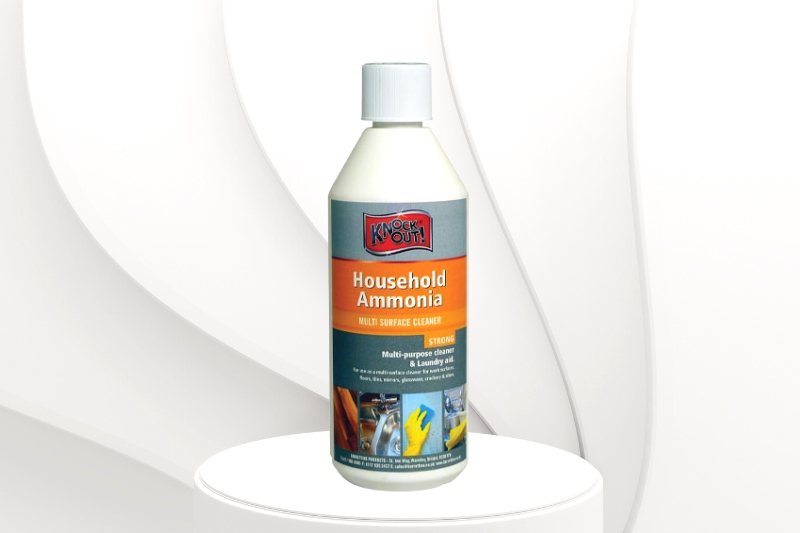
Opt for a clear ammonia like Knock Out Household Ammonia over sudsy formulas. Clear ammonias are generally better all-round cleaners, so you’ll get more use out of it for other tasks.
You’ll also know exactly what you’re working with and won’t need to worry whether the added soap is safe for your clothing.
You should also avoid scented ammonias with added colours, as these can easily stain light coloured fabrics.
Can you mix ammonia with laundry detergent?
Yes, as you’ll see below, mixing ammonia with laundry detergent can prove useful. But first you must check the ingredients list and make sure your detergent doesn’t contain bleach.
This is because when ammonia and chlorine bleach mix, they create harmful, toxic fumes.
There’s also no point mixing ammonia and white vinegar as they will simply cancel each other out.
5 Ways to Use Ammonia in Laundry
Now let’s explore how to use ammonia in laundry for best results. We’ll cover five different scenarios, recommended dilutions and other useful tips to help you out.
Just make sure that you’re wearing rubber gloves and are in a room with good ventilation before getting started.
1. Stain removal
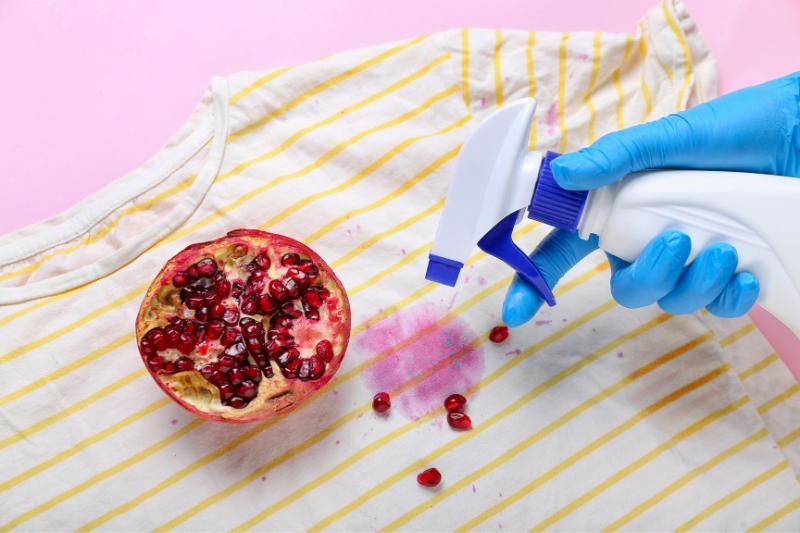
There are several ways you can use ammonia to remove stains from cotton and polyester fabrics.
The first is to create a stain remover solution using equal parts water, ammonia and bleach-free laundry detergent.
Pour the mixture into a spray bottle, then spritz it directly onto the stain. Leave the grime fighting combo to soak in for 20 minutes, then wash as usual.
Tip: Although ammonia doesn’t usually cause colour changes in the same way as bleach, it’s still best to do a patch test first.
Apply a small amount of the solution to a discreet area, such as the inside bottom hem, to check for any lightening or fading.
For tougher stains like blood, you can either use a stronger 50:50 ammonia and water spray solution (cutting out the detergent).
Or you can soak the garment. To do this, add two cups of warm water, ⅔ cup ammonia, ⅔ cup of washing up liquid and 6 tablespoons of bicarbonate of soda in a bucket. Soak the garment in the mix for 2-3 hours, rinse in cold water, then launder.
Tip: you can also add ½ cup of ammonia to the wash cycle for extra cleaning power.
2. Brightening whites
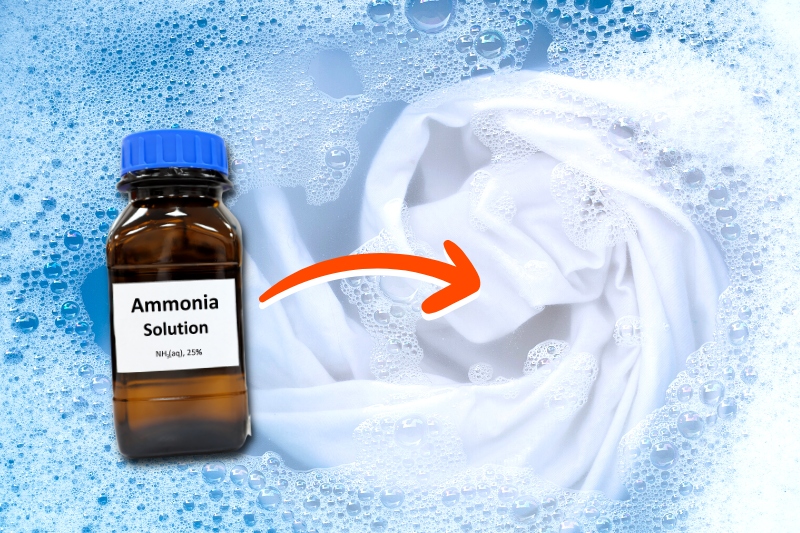
If your whites are looking dull, grey or even yellow, you might be tempted to bleach them. But over time, bleach can wear down the fabric’s fibres, leaving them rough to the touch.
It can also be the cause of yellowing in some cases too. Luckily, ammonia is a great alternative.
Just add one cup of ammonia to a full load of laundry with your detergent. Then run a second rinse cycle to remove any lingering odours before drying your whites in the sun for some additional natural brightening.
3. Banishing odours

Ironically, even though neat ammonia smells pretty unpleasant, it’s actually very good at getting foul odours out of clothes.
Whether you’re dealing with sweaty or musty smelling garments, try adding ½ cup of ammonia to a warm-hot wash cycle with your detergent.
Again, don’t forget to run a second rinse cycle to ensure there is no hint of ammonia left on the items.
For particularly strong odours and those that have become ingrained in the fabric over time, soak the item first.
All you need is a bucket of cool water with one cup of bicarbonate of soda. Submerge the garment into the solution and leave for 3-4 hours.
When time’s up, wash in the machine as outlined above, with both detergent and ammonia for best results.
4. Rejuvenating towels
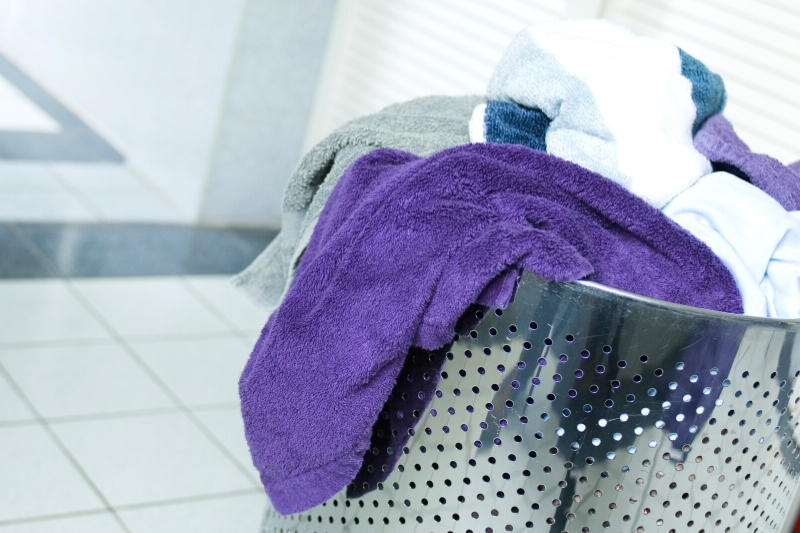
Are your towels less absorbent or not as soft as they used to be? If you live in a hard water area or you’ve previously used fabric conditioner or dryer sheets while laundering them, that’s likely why.
To solve this issue, add one cup of ammonia to your laundry to dissolve the mineral deposits. It will also break down any oily coatings that have become attached to the fibres.
In future, you can then use white vinegar in place of fabric softener to keep your towels fluffy.
5. Tackling mildew
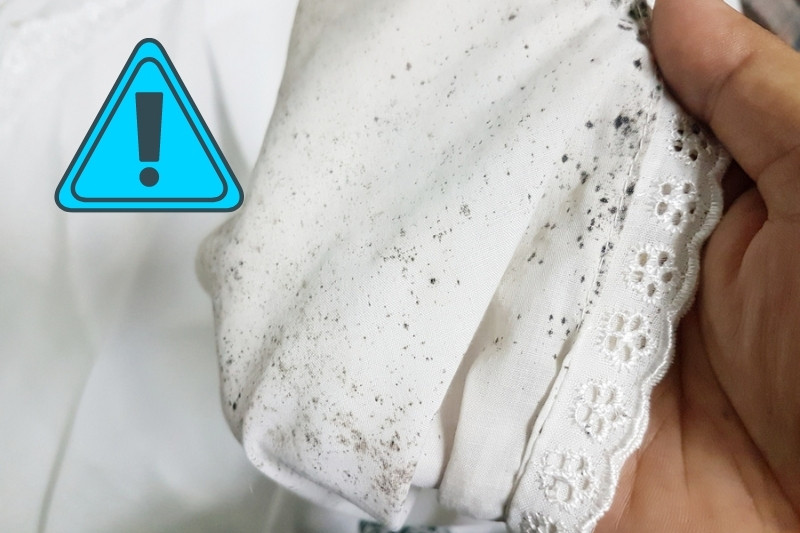
Mould and mildew can be difficult to remove from fabrics. First, you need to ensure that the affected garment is dry, as this will help to prevent the spores spreading.
Next, mix a 50:50 solution of ammonia and water in a bowl, and apply it to any visibly dark spots with a sponge.
Leave the mixture to sit on the stains for 10-15 minutes. Then use an old, clean toothbrush to gently scrub the mould using a circular motion.
Once you’ve worked out as much of it as possible, rinse with cold running water (from the back of the stain), then launder as normal.
We hope this article proved useful! Discover more ways to clean with ammonia, plus a whole host of handy laundry tips for every situation on our blog.

A proud Yorkshire lass with a love for movies, music and cosy nights in! Once a self-confessed avoider of cleaning, she’s always on the lookout for new ways to make household chores as quick and simple as possible.
